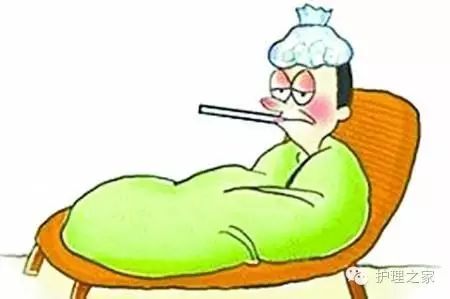

 Viral Cold and Bacterial Cold are concepts from Western medicine, while Wind-Heat Cold and Wind-Cold Cold are concepts from Traditional Chinese Medicine (TCM).
Viral Cold and Bacterial Cold are concepts from Western medicine, while Wind-Heat Cold and Wind-Cold Cold are concepts from Traditional Chinese Medicine (TCM).
The main symptom of Viral Cold is severe runny nose, while Bacterial Cold is characterized by redness and swelling of the throat, with yellow nasal discharge. If a high fever persists for 2-3 days after taking antipyretics, it indicates a bacterial cold, and a blood test should be conducted at a hospital, along with antibiotic treatment. For viral colds, it is essential to rest, ensure good ventilation, eat light foods, and drink plenty of water. Wind-Heat Cold often occurs when the weather starts to warm up throughout the year, with constipation as a distinguishing symptom. It typically presents with fever, and before symptoms like headache appear, the throat begins to hurt, feeling dry and painful, with thirst and a cough that gradually leads to more severe symptoms. Wind-Cold Cold usually occurs in autumn and winter, characterized by a fear of cold and clear nasal discharge. The treatment approaches of Western medicine and TCM differ; Western medicine focuses on bacteria, while TCM emphasizes the human body. For viral colds, bacterial colds, wind-heat colds, and wind-cold colds, treatment should be either TCM or Western medicine. This is akin to the differences between civil law and common law systems; both can be applicable, but confusion can arise when both are applied simultaneously in civil law countries. The distinctions between Wind-Cold Cold, Wind-Heat Cold, and viral colds are significant. First, it is essential to understand that Wind-Cold Cold and Wind-Heat Cold are classifications of colds in TCM. Viral colds are a modern medical term, divided into common colds and influenza, with influenza being a type of viral cold. Wind-Cold Cold: Caused by the invasion of wind-cold evil, leading to the failure of lung qi to disperse. Symptoms include severe chills, mild fever, no sweating, body aches, nasal congestion with clear discharge, cough with thin white phlegm, no thirst or preference for hot drinks, and a thin white tongue coating. The treatment principle should focus on warming and dispersing the exterior. Commonly used herbs include Ma Huang (Ephedra), Jing Jie (Schizonepeta), Fang Feng (Saposhnikovia), and Su Ye (Perilla Leaf). Representative formulas include Cong Guo Tang (Scallion Decoction) and Jing Fang Bai Du San (Schizonepeta and Saposhnikovia Powder). For patent medicines, options include Zheng Chai Hu Yin Chong Ji (Zheng Chai Hu Decoction), Chuan Shao Tea, and Tong Xuan Li Fei Wan (Regulate Lung Pill). After taking the medicine, drinking some hot porridge or soup can help induce slight sweating to assist the dispersal of wind-cold. Wind-Heat Cold: Caused by the invasion of wind-heat evil, leading to disharmony of lung defense. Symptoms include high fever, slight aversion to wind, headache, sweating, redness and swelling of the throat, cough with sticky or yellow phlegm, nasal congestion with yellow discharge, thirst with a preference for drinking, red edges of the tongue, and a thin white or slightly yellow tongue coating. The treatment principle should focus on cooling and dispersing the exterior. Commonly used herbs include Ju Hua (Chrysanthemum), Bo He (Mint), and Sang Ye (Mulberry Leaf). Representative formulas include Yin Qiao San (Yin Qiao Powder) and Sang Ju Yin (Mulberry Leaf and Chrysanthemum Drink). For patent medicines, options include Yin Qiao Jie Du Wan (Yin Qiao Detoxifying Pill), Ling Qiao Jie Du Wan (Ling Qiao Detoxifying Pill), Sang Ju Gan Mao Pian (Mulberry Leaf Cold Tablets), and Ban Lan Gen Chong Ji (Isatis Root Powder). If fever is severe and throat swelling is significant, it can be combined with Shuang Huang Lian Kou Fu Ye (Shuang Huang Lian Oral Liquid) or Qing Re Jie Du Kou Fu Ye (Clearing Heat and Detoxifying Oral Liquid). These medicines have good heat-clearing and detoxifying effects. For wind-heat colds, it is essential to drink plenty of water and maintain a light diet, such as consuming radish soup or pear soup.Next, let’s distinguish between common colds and influenza. Common Cold: Commonly known as “wind injury,” it is a prevalent upper respiratory viral infection. It is primarily caused by exposure to cold, overexertion, or other factors that lead to a decrease in the body’s resistance, allowing the rhinovirus, which is latent in the nasopharynx, to become active. It can also be caused by parainfluenza virus, respiratory syncytial virus, coxsackie virus, etc. The common cold has a short incubation period, with a gradual onset and prominent respiratory symptoms, while systemic symptoms are mild. Early manifestations include throat itching, dryness, and burning, followed by chills, low fever, nasal congestion, clear watery nasal discharge, sneezing, and coughing. If secondary tracheobronchial infection occurs, hoarseness and worsening cough may appear. Systemic symptoms can include muscle aches, headaches, fatigue, abdominal bloating, constipation, or diarrhea. Influenza: Influenza, commonly referred to as flu, is an acute respiratory infectious disease caused by the influenza virus, characterized by high infectivity, a short incubation period (1-4 days, sometimes just hours), and a high incidence, particularly in spring and winter. Clinically, respiratory symptoms are often mild, while systemic symptoms such as fever are more severe. Influenza viruses are classified into types A, B, and C, with type A often causing outbreaks and pandemics, type B causing smaller outbreaks, and type C being sporadic. There is no cross-immunity between the three types, and the virus is prone to mutation, leading to recurrent infections.Preventive measures include taking Ban Lan Gen (Isatis Root) powder, oral Amantadine (0.1g every 12 hours for 1-2 weeks), or using herbal remedies for prevention. Regular exercise suitable for one’s condition and practices like cold water baths and washing the face with cold water can enhance the body’s resistance to disease and adaptability to cold, which are the best methods for preventing colds.
Thus, while a cold may not be a serious illness, there is much knowledge involved in its treatment. The main symptom of a cold is severe runny nose, while bacterial colds are characterized by redness and swelling of the throat, with yellow nasal discharge. If a high fever persists for 2-3 days after taking antipyretics, it indicates a bacterial cold, and a blood test should be conducted at a hospital, along with antibiotic treatment. For viral colds, it is essential to rest, ensure good ventilation, eat light foods, and drink plenty of water.Wind-Heat Cold often occurs when the weather starts to warm up throughout the year, with constipation as a distinguishing symptom. It typically presents with fever, and before symptoms like headache appear, the throat begins to hurt, feeling dry and painful, with thirst and a cough that gradually leads to more severe symptoms. Wind-Cold Cold usually occurs in autumn and winter, characterized by a fear of cold and clear nasal discharge. The treatment approaches of Western medicine and TCM differ; Western medicine focuses on bacteria, while TCM emphasizes the human body. For viral colds, bacterial colds, wind-heat colds, and wind-cold colds, treatment should be either TCM or Western medicine. This is akin to the differences between civil law and common law systems; both can be applicable, but confusion can arise when both are applied simultaneously in civil law countries.Thus, while a cold may not be a serious illness, there is much knowledge involved in its treatment!
Source: Internet For sharing purposes only, if there is any infringement, please contact us, and we will handle it promptly.

